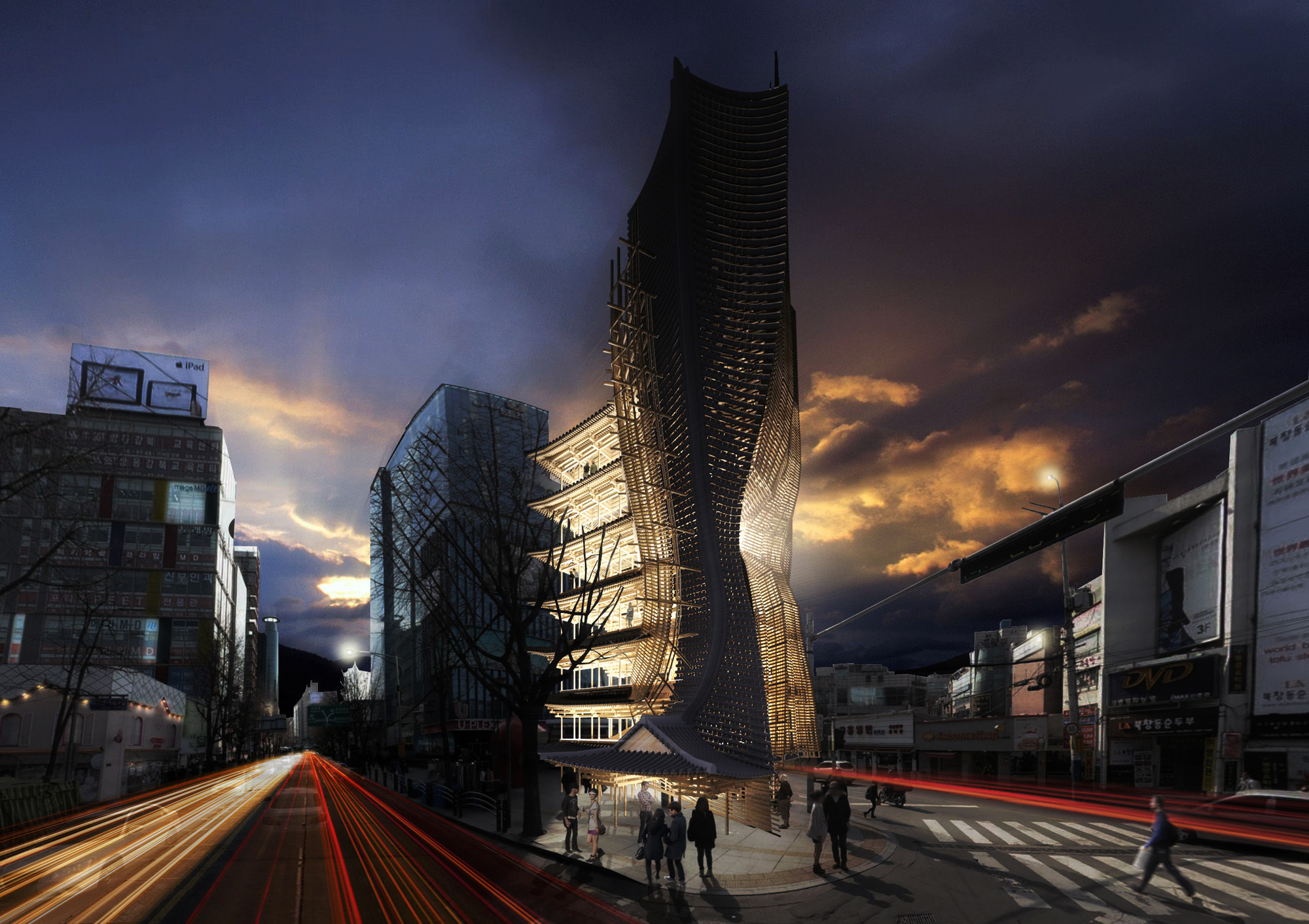
BLUE TAPE, the winning proposal of an international competition to design an Architecture School adjacent to the American University in Dubai, “is a vertical re-imagining of the typical architecture school typology.” Submitted by USC alumni Evan Shieh and Ali Chen, BLUE TAPE, which transforms a horizontal pin-up space into a vertical 'conceptual connector,' is inspired by USC's 'Blue Tape Reviews' (their method of pinning up work for design reviews).
















